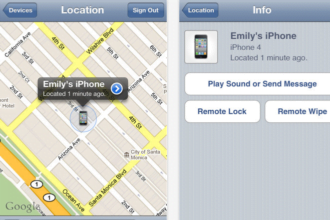

Last week, Dr David Albert showed us AliveCor’s Mobile Heart Monitor for iPhone4 or 4S. This week, Dr David Delaney is here from SAP to talk to us about how SAP can help raise quality of care and help providers save time and money. Dr Delaney is the Chief Medical Officer, HealthCare, for SAP and has a background in medicine, information technology and business. He explains how SAP takes clinical and financial raw data and analyzes it and sorts it to make sense and be accessible to physicians and other healthcare professionals. Now, watch the video:
To see other videos in this series, please go to this page. And if you have a story to tell that can reduce healthcare costs and raise quality of care, please comment below or email me at joan@socialmediatoday.com Thanks!
Video Transcript (by TranscriptionStar)
Joan: Hello. I’m Joan Justice from HealthWorks Collective. And I’m here today with Dr. David Delaney, the Chief Medical Officer for Healthcare at SAP. Dr. Delaney has a background in medicine, information technology and business. And I asked him here today to talk to us about how SAP can manage big data to help physicians find ways to optimize patient care. Dr. Delaney why don’t you tell us a little bit about what SAP does to improve care quality for patients and reduce costs?
Dr. Delaney: Absolutely and now let me start out by saying thank you Joan for having me on, and giving this opportunity to talk to your audience. You know when you look at what SAP does you really have to start at the foundation because that’s where many organizations struggle when you look at your typical if there’s such a thing medical center and healthcare system they have a variety of systems.
Often they’ll have the number of different EHRs in place they’ll have different financial systems, and so it’s a real challenge for them to be able to pull that information together in a way that makes sense to apply data governance to it, so that a length of stay at a single one institution or one section is another section, and really make all those definition standards you have that a set of trusted data, so that’s one of the first steps that we help organizations with and then on top of that creating a semantic linear [Phonetic] [0:01:38.] which basically means changing those cryptic terms off and within systems for individual feels in the terms that makes sense for business and clinical users.
So that a nurse or a business person looks at within the organization, the field names all just makes sense to them in terms of what they are, they trust the definition underneath is true and accurate, and are able to begin to self-serve and create their own queries, ask their own questions other system and get answers back, and to the end to more actively manage around cost and quality for the organization. And be able to do that not only within one situation, but cross multiple institutions across inpatient outpatient, so that foundational layer is very, very important. And its one of the things that business of its [Phonetic] [0:02:22] does extremely well.
Joan: Okay so you take all this raw data, and the clinical and the financial and you analyze it, sort it, and have it make sense to the healthcare professionals and providers.
Dr. Delaney: Exactly and we pull it into really so a standardized data model and then from on top of that you have all your analytics that can run and how institutions better understand what’s going on. You can create things like dashboards available on the web applications via mobile devices or your iPad, your iPhone, Android device so that its consumable whoever folks are to help them make better decisions as they’re going throughout the day.
Joan: Okay so you also facilitate seeing the EHR on mobile applications, tablets and phones?
Dr. Delaney: Yeah and that’s one of our newer, newer pieces of that because in the past we’ve been very focused on the analytic piece and the — you know one of our main ways to market actually is that we’re embedded in mostly EHRs is they’re reporting in analytic tool, and so we within the sandbox of the EHR reporting tools there often as organizations then want to go broader than that.
They want to begin to pull in the financial information and information from other EHRs, other systems then they will go more broadly with business objects. And you get something that again that can create that, that foundation. On the top that one of our more recent this market is called the EHR wire and that’s basically a viewer for EHRs that gives them mobility, helps communication occur more easily between providers so that providers were actually at the hospital can communicate remotely with specialist who might be outside the hospital and collaborate on cases they can both see the same dataset represented in the same fashion and discuss the case, and determine best course of action.
It can take multiple EHR so maybe you have a different inpatient and outpatient EHR and provides between institutions or between EHR so its one consistent way to browse and do the data in a mobile fashion and really speed up and enhance communication which you know as you know with your nursing background you know time is hard, its brain depending on what the patient is coming in with you know time has a tremendous amount of value being able to collaborate brain the experts together no matter where they are in a moments notice to make a good decision being execute on it you know all those things help lead to better care.
Joan: Yeah sure absolutely I understand. It also says on your website that you improve preventative care, and how it is SAP do that?
Dr. Delaney: Yeah absolutely. So one of the things we’re very excited about is that we you know work very closely with not only the leading folks on the provider side, but also on the payer side, and when you look at — is it a better place over the last decade or so and it cares to some [Phonetic] [0:05:23]. The payers have great knowledge around populations, defining populations doing risk stratification determining who is at the greatest risk for an eventual curve. They’re very good at that. And then you look at the provider side, and the provider side were very good at being individual patients providing care. Patients come with a problem bringing out what it is, and taking care of it.
But we’re how limited we you know our view of the world as physicians and nurses is really around the patient in front of us who the next patient to the door is and who the next patient around us, and we really don’t have a very population-based knowledge to kind of know who is likely you know where that we also likely to come up the bus which [Phonetic] [0:06:01] patient. And so taking that information that payers know so well around population were stratification and providing ways for practices to visualize it to better understand within their patient panel you know who is likely to have an issue this year and what can be done, and so really providing that this, this lens to this filter to see who they’re sick, is the sick patients are caring for, who’s at risk and what can be done to help prevent that thing from happening and making all actionable and easy for them to digest and consume.
Joan: Great. Well, thank you so much for this David. You’ve really shown us how SAP can help with controlling cost and raising the quality of care. I thank you for the interview.
Dr. Delaney: Thanks so much John. I appreciate your time.








